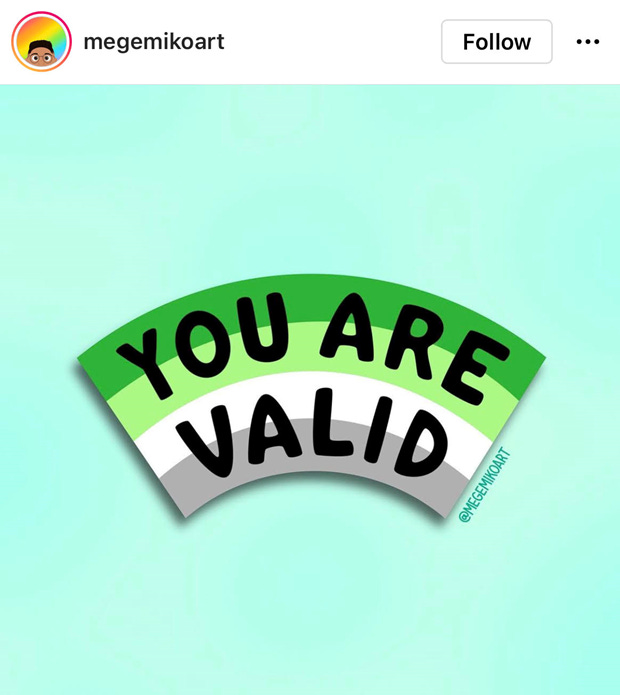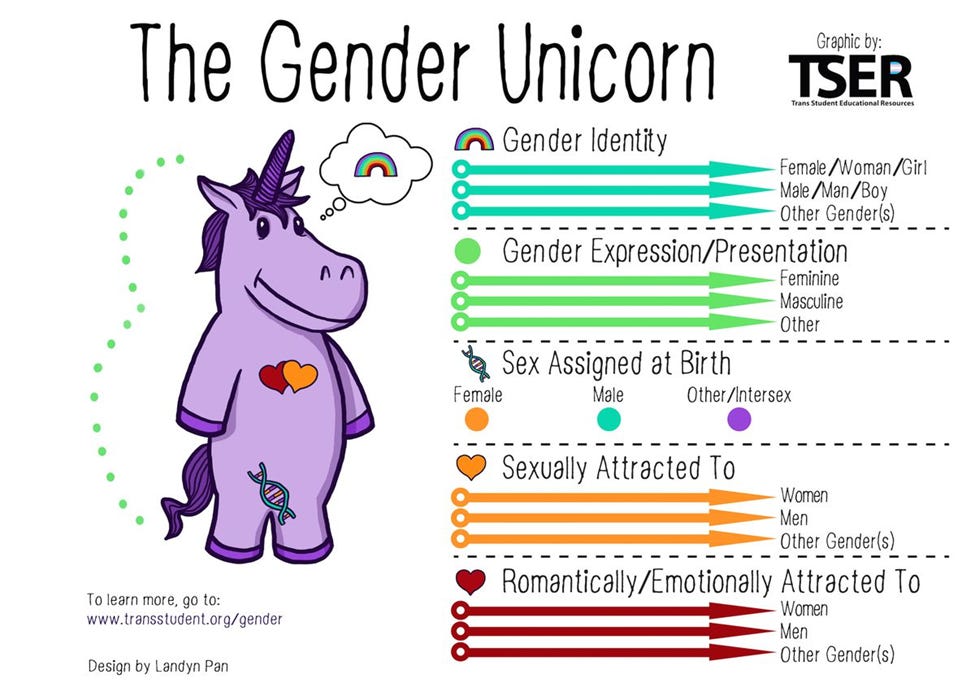Before I dive into what it means to be aromantic, let’s talk about the romantic spectrum. Let’s use the Gender Unicorn to help visualize this. The romantic spectrum is represented on the bottom right in red.
(Trans Student Educational Resources - Gender Unicorn)
The romantic spectrum encompasses who we are romantically and emotionally attracted to. Notice that this is different than who we are sexually attracted to. We may feel love toward a person or desire some type of relationship with them without wanting to have sex with them.1 Romantic attraction may include a desire to spend time together, go on dates, and share emotional intimacy. Whereas sexual attraction may be more physical and a desire to have sex with someone.
So what does it mean to be aromantic?
People who identify as aromantic do not feel romantic attraction to another person.2 We may meet someone and feel sexually attracted to them but not want to date them or have an emotional relationship.
How does this differ than being asexual?
Asexuality is about who we are sexually attracted to (sexual orientation; on the image above, this is the spectrum with orange arrows). We may feel sexually attracted to someone and not want a relationship with them (more fitting with asexuality). We may desire an emotional connection but not feel sexual attraction (more fitting with aromanticism). Sexual orientation and romantic orientation are two separate but related concepts.
Aren’t these similar?
Sexual attraction and romantic attraction may align or may differ. There is not a “standard” way for this to occur.
For example: Bob is heterosexual and heteroromantic. He is both emotionally and sexually attracted to women. In this example, Bob’s sexual orientation and romantic orientation are aligned. Sally is bisexual and homoromantic. Sally is sexually attracted to men and women but only desires romantic relationships with women. (These are somewhat oversimplified examples but help to illustrate).
I am confused!
That’s okay! Let’s lean in to the confusion rather than tapping out. Deep breaths! Sexual orientation and romantic orientation can be confusing if we have never learned about them or are navigating our own experiences. As I mentioned last week, it can be helpful to read both fiction and non-fiction sources to understand ourselves and others more. Learning from someone’s lived experience can help solidify some of these concepts.
Books with Aromantic Characters
Why are there so many labels now? This didn’t exist when I was younger!
Romantic and sexual feelings have always existed. These are not new phenomena but rather different ways to describe existing experiences. Language is limited. We do our best to accurately describe what we feel. Words can only summarize so much. As our language evolves, we find better words to describe our experiences.
What can I do with this information?
Labels and language can be helpful in developing insight into who we are. Understanding how we identify, what we like and don’t like, and who we are attracted to helps us develop a richer understanding of ourselves. Maybe we feel alone and isolated in how we feel. Exploring our identity can help us connect with others who identify in the same ways. This can also help us understand others. Understanding how our partners or friends identify can help us understand them in a richer and more nuanced way.
Questions about aromanticism?
Here are some commonly asked questions from Aromanticism.org https://www.aromanticism.org/en/faq
Interested in learning about other types of romantic orientations? Here is a non-exhaustive list of other identities including polyromantic, and gray-romantic.
(Note: Research is sparse on aromanticism. Further empirical research is needed to understand romantic orientation and aromanticism from a scientific lens).
What orientations or identities would you like me to explore on here? Leave a comment below.
https://www.seftonsexualhealth.nhs.uk/relationships-sex/sexuality/what-is-the-difference-between-romantic-orientation-and-sexual-orientation/#:~:text=Romantic%20orientation%20indicates%20the%20gender,necessarily%20have%20to%20involve%20sex





